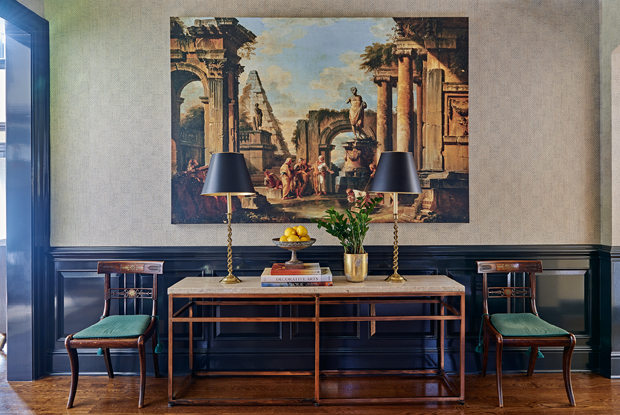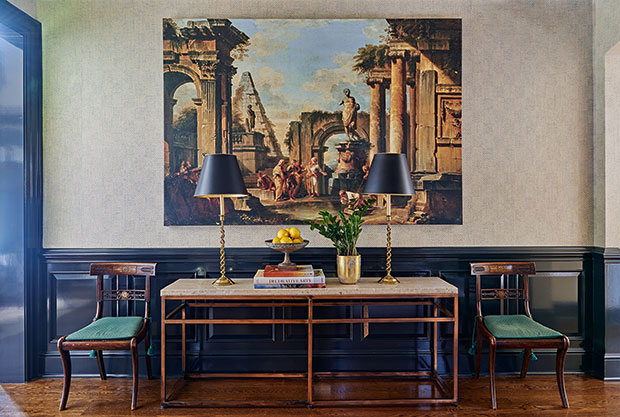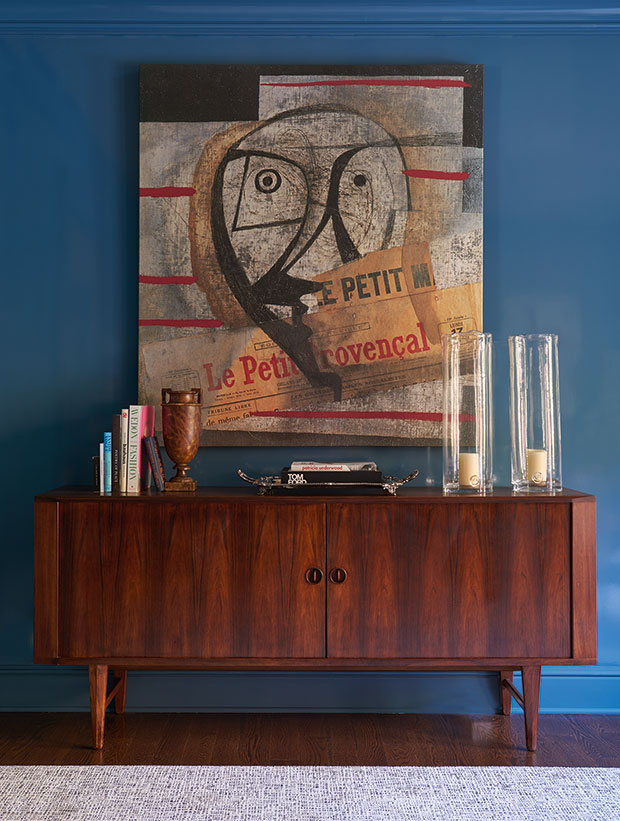Decorating & Design
The 4 Biggest Mistakes People Make When Hanging Art
Published on July 31, 2018

Alexa Samuels of Mercartto reveals some of the biggest mistakes people make when hanging art.
Have you ever walked into a room and instinctively sensed that something didn’t feel right about the art? That it just isn’t working, but you can’t put your finger on it? It may simply be a matter of how the art is placed within the room. Here are the four biggest mistakes people make when hanging art.

1. It’s too high.
When you hang art, you want it to be cohesive with the furniture as well as the shape of the room and ceilings. While you don’t want to hit your head on art when you’re sitting on the couch, you also don’t want to crane your neck. If people need to look up to see your art when seated, that’s a good indicator that your art is hung too high.
Follow these steps to find the perfect height:
1. Everything starts from 57” above the floor. That is your magic base number.
2. Measure the width of your art, then divide the number in half (e.g. 24”/2=12”).
3. Next, measure the distance between the top of the frame and the hanging wire at its most taut, as if it were hanging on the wall (e.g. 2”). Subtract from the half width (e.g. 12”–2”=10”).
4. Measure and mark 57”+10”=67” from the floor. Place your hook and hang art. It’ll hang perfectly!
2. It’s too small for its location.
Another frequent mistake is hanging art that’s too small for the scale of the space. Just like someone who wears clothes two sizes too small, art that’s the wrong proportion won’t look right — it will become a distraction. You know a piece is too small when you have to squint to see it. Ask yourself: does it look lost? Does the space still look empty? Is it filling up barely a quarter of the space above the furniture?
Here’s what you can do:
Try experimenting with proportions by hanging up a large piece of paper, pillowcase, or a sheet, and see what size feels comfortable. Don’t be afraid to put a couple of pieces (or more) of artwork together. Alternatively, try moving that piece to a more intimate location, like a hallway, bathroom or small nook.

3. Forcing art into a space because you have it.
Just because you spontaneously bought that Mexican ceramic sombrero after a few tequila sunrises on vacation, or inherited your great aunt’s 1970s landscape print, or bought art to match your couch when chartreuse was all the rage doesn’t mean you have to hang it above the mantelpiece for all to see. Your taste and budget may evolve over time; it’s okay to make changes, or to leave a wall blank while you search for a piece of art that works.
Here’s what you can do:
A great idea to keep your home fresh is to rotate your art. Moving art around is a great way to bring new energy into your home without spending a penny. Why not swap art with one of your friends?
4. Not hanging it securely.
I’ll admit it: I made this mistake. I had a heavy piece of art with a wooden canvas hanging at the top of my stairs. One day the wind caught the front door and slammed it. Suddenly there was a loud crash followed by what sounded like a snowboarder sliding down my wooden staircase. Luckily no one was on the stairs at the time, and the piece was sufficiently durable to withstand the ride. But it was a wake up call.
Here’s what you should do:
Do a quick check of your art. Is the hook in securely? Is the hook the right strength for the weight of the art? Do you have enough hooks? Is the hanging wire attached well? Is there a piece of art that’s constantly tilting or doesn’t look flush with the wall? Pay particular attention to art hung over beds — art falling from the sky is not a nice way to wake up.
John Gruen
House & Home March 2018
Garrow Kedigian

